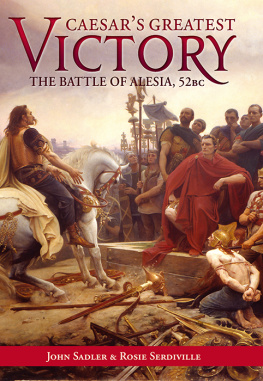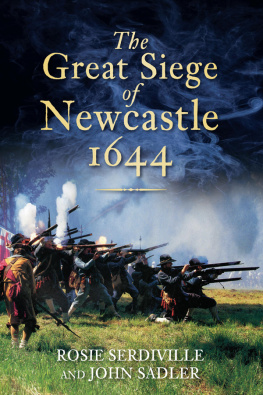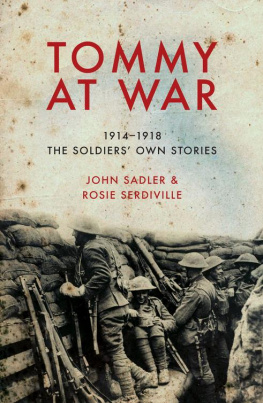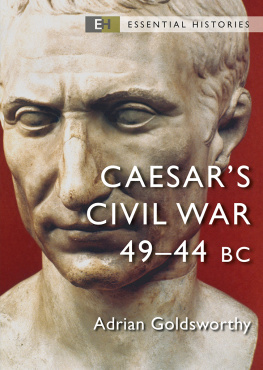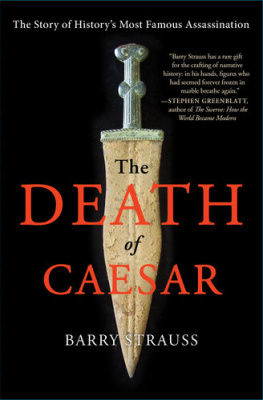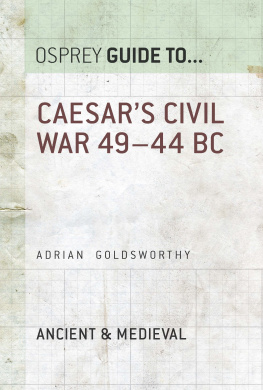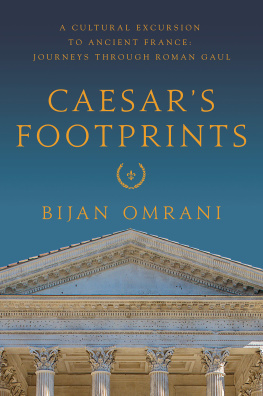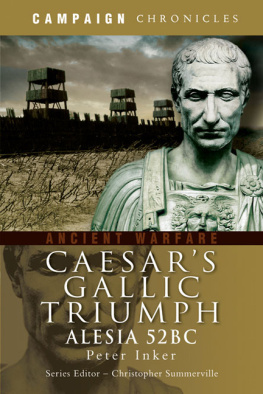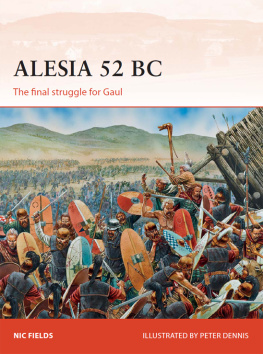

Published in the United States of America and Great Britain in 2016 by
CASEMATE PUBLISHERS
10 Hythe Bridge Street, Oxford OX1 2EW, UK
and
1950 Lawrence Road, Havertown, PA 19083, USA
Copyright 2016 Casemate Publishers and the individual authors
Hardcover Edition: ISBN 978-1-61200-405-1
Digital Edition: ISBN 978-1-61200-463-1
A CIP record for this book is available from the Library of Congress and the British Library
All rights reserved. No part of this book may be reproduced or transmitted in any form or by
any means, electronic or mechanical including photocopying, recording or by any information
storage and retrieval system, without permission from the publisher in writing.
Printed in the United Kingdom by TJ International
For a complete list of Casemate titles, please contact:
CASEMATE PUBLISHERS (UK)
Telephone (01865) 241249
Fax (01865) 794449
Email:
www.casematepublishers.co.uk
CASEMATE PUBLISHERS (US)
Telephone (610) 853-9131
Fax (610) 853-9146
Email:
www.casematepublishers.com
Front cover: Vercingtorix devant Csar (Vercingetorix faces Caesar), by Lionel Royer. Courtesy of Muse Crozatier, Le Puy-en-Velay, France.
For Khaled al-Assad, who showed us that true history can be worth dying for
During this period more than 400,000 of the enemy were slain by Gaius Caesar and a greater number were taken prisoners. Many times had he fought in pitched battles, many times on the march, many times a besieger or besieged. Twice he penetrated into Britain, and in all his nine campaigns there was scarcely one which was not fully deserving of a Triumph. His feats about Alesia were of a kind that a mere man would scarcely venture to undertake, and scarcely anyone but a god could carry through.
Velleius Paterculus, Roman History , II, 47
CONTENTS
ACKNOWLEDGEMENTS
You can blame Ladybird Books, those omnipresent hardback companions of our early youth (ours and many others), particularly Julius Caesar and Roman Britain , for Johns obsession with the Roman army. Most of his childhood summers were spent at High Shield in the shadow of the Wall where it reaches across the escarpment of the Whin Sill, so much a part of the landscape, it seemed impossible to imagine the place before Hadrians big idea. It is grossly unfashionable to suggest that Empire might be a good thing what did the Romans ever do for us? But they did do rather a lot and Northumberland would have had little or no tourism otherwise, so providing us with a heritage base was something the Romans definitely did do for us up here.
Johns early introduction to Roman and Romano-British archaeology as a lad cemented the craze and he owes a lifelong debt to such local titans as John Gillam, George Jobey and Jock Tate, Barbara Harbottle, the late Alex Bankier and the still-very-much-living John Day and Beryl Charlton. And there were the models; Billy Bulmers lovingly crafted scale reconstruction of the wall itself, of milecastles, turrets, forts and bath houses in the old Museum of Archaeology (now part of the Great North Museum). Since that time we have both walked the Wall countless times and John has taught about the Roman Army for many years at Newcastle Universitys Centre for Lifelong Learning; thanks are also due to Colm OBrien, Max Adams and other colleagues there.
John has followed Caesar and Vercingetorix along the whole route of the campaign of 52 BC and it is one of the most compelling military odysseys you can undertake. The whole thing hangs on a series of knife edges; for the first time Caesar faced a brilliant opponent with a thorough grasp of tactical realities, every bit as single minded and ruthless.
For Rosie, the introduction came in a gentler clime. Growing up at one end of the Icknield Way she was raised on tales of the Celts and their resistance to Rome. They won a partial victory those ancient ones the Roman road is called Icknield Street, they never got their hands on the road Better still, her Irish family happily informed her that the Romans never got their hands on the Emerald Isle they were scared off. A limited truth as it turned out but that was for later. Then she saw the film Carry on Cleo and her view of Rome was set forever. Infamy, infamy, theyve all got it in for me . Julius Caesar has never looked the same since Kenneth Williams played him.
This book could not have been completed without the assistance of the following people: Jez Hunt, Paul Martin and Dave Silk, staff at the Literary and Philosophical Society Library Newcastle upon Tyne, at the Society of Antiquaries of Newcastle upon Tyne, Newcastle Central Library, Sebastian Pitoizet and colleagues at Museo-Parc Alesia, and lastly to Clare Litt of Casemate for another successful collaboration.
As ever, the authors remain responsible for any errors of omissions and whilst every effort has been made to trace copyright holders of any quotations and illustrations included throughout the text, the authors would be pleased to hear from anyone who may, inadvertently, have been overlooked or incorrectly identified.
John Sadler and Rosie Serdiville
Northumberland, spring 2016
A NOTE ON SOURCES
Any description of the events in Gaul in 52 BC, in particular the politics and society of Celtic Gaul has to deal with one fundamental problem: the Gauls did not leave a written record, theirs was an oral society. What they have left us are physical remains: their art, their artefacts and the landscapes they inhabited. If we want a written record we have to rely on Caesar, hes the only one there who put pen to paper. This is frustrating as we only get the view from that side of the hill written by one with a very firm agenda and a particular audience in mind. Caesar and Rome needed Gaul, if only because they needed to top up their supply of Gaulish slaves by 15,000 a year. We have used other sources, drawing on the insights offered by archaeology, anthropology and the medieval renditions of the oral tradition recorded by Irish monks in the medieval period.
Later sources such as Plutarchs Fall of the Roman Republic ; Six Lives , The Parallel Lives & Lives of the Noble Greeks and Romans and Suetonius Lives of the Twelve Caesars offer us valuable insights.
We may also refer to Appian, History of Rome ; Cassius Dio, Roman History ; Diodorus Siculus, Library and World History ; Frontinus, The Strategemata ; Paterculus, History of Rome ; Strabo, Geography ; Velleius Paterculus, Roman History . Tacitus, in his Germania (he was writing about Agricolas time of course toward the end of the first century AD) offers some useful snapshots. For Roman military science, as ever we fall back on Vegetius, Epitome of Military Science .
Caesar has many biographers; most recently Adrian Goldsworthys work deserves to become a modern classic. Both Dr Peter Inker and Dr Nic Fields have produced excellent modern accounts of the siege of Alesia though, for such a significant event with such telling resonances, it is generally under-written. We hope to bridge that gap.
CHRONOLOGY
390 BC
The Celts sack Rome
154 BC
Massalia (Marseilles) petitions for Roman assistance
122 BC
Rome first allies with the Aedui. They fight and defeat the Allobroges
66 & 62 BC
Revolt of the Allobroges
61 BC
The Aedui request Roman assistance, the Helvetii are restless
59 BC
Caesar is consul and appointed governor of the provinces of Cisalpine Gaul and Dalmatia. Transalpine Gaul is added to his portfolio on the death of the governor
Next page
